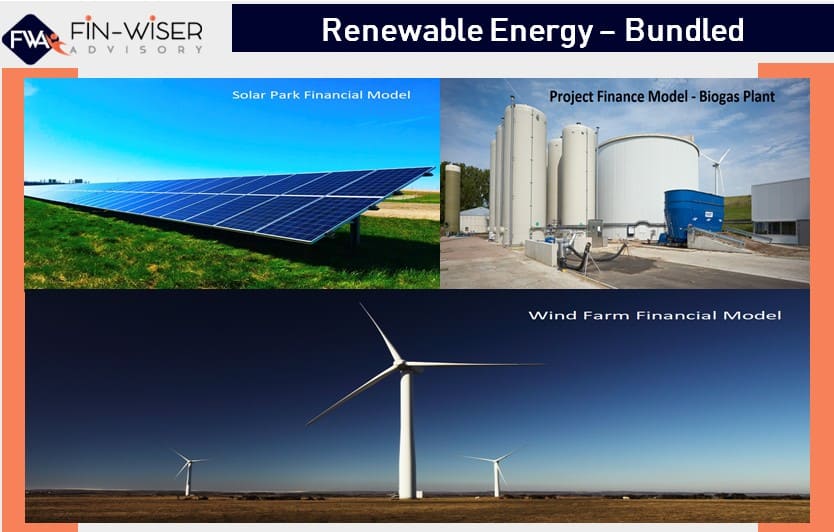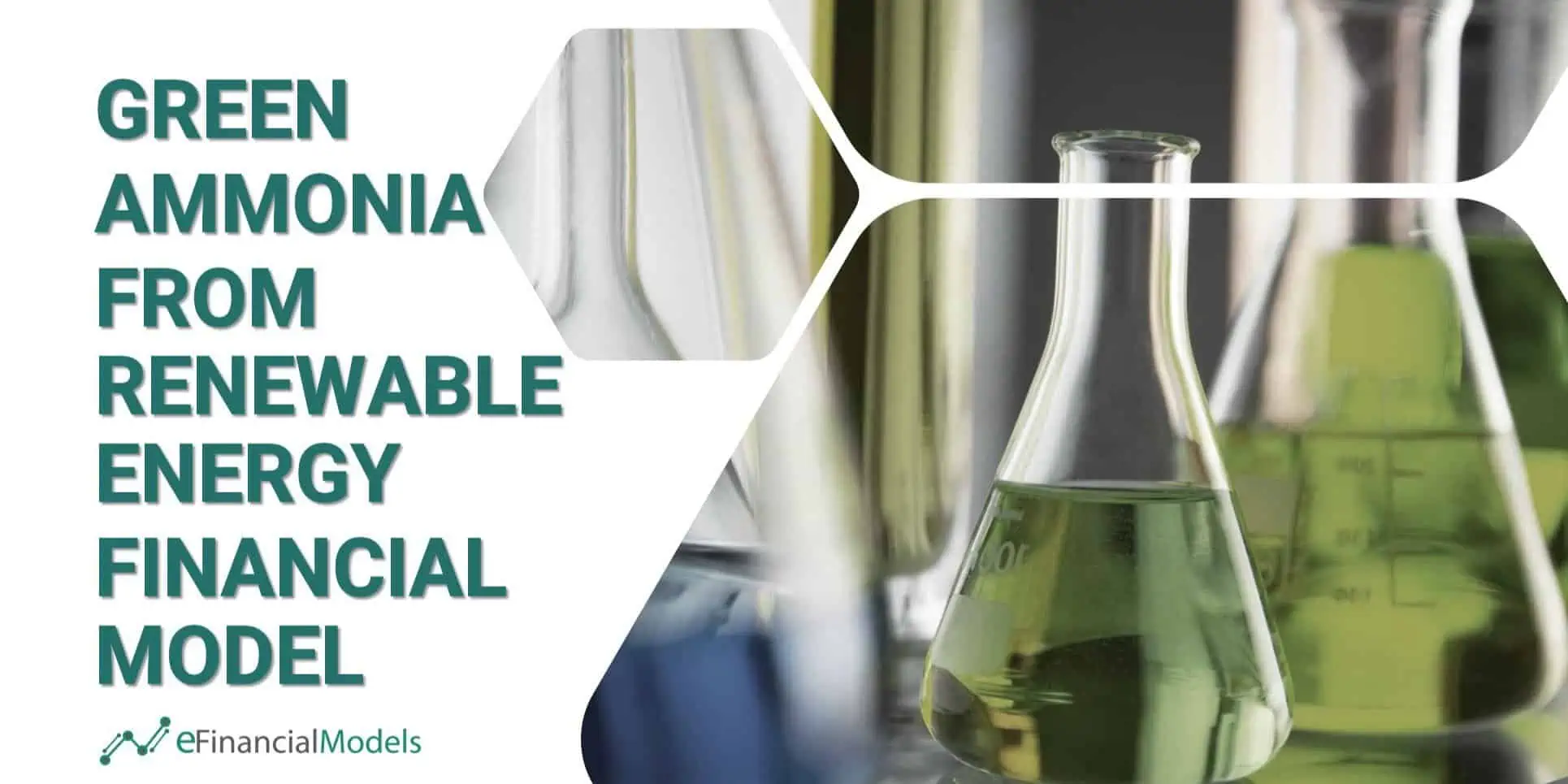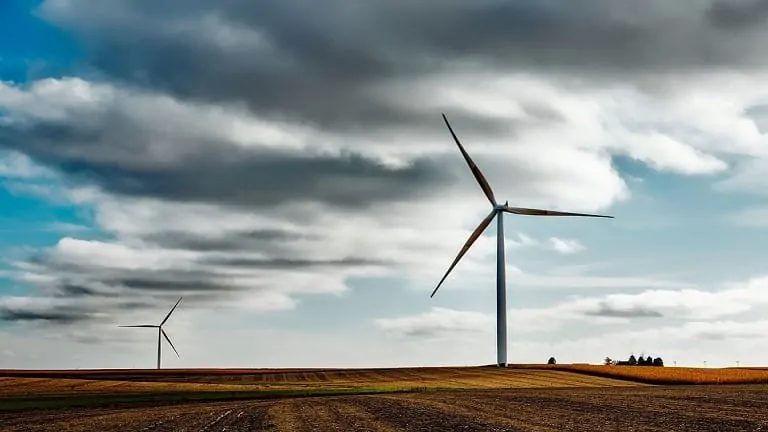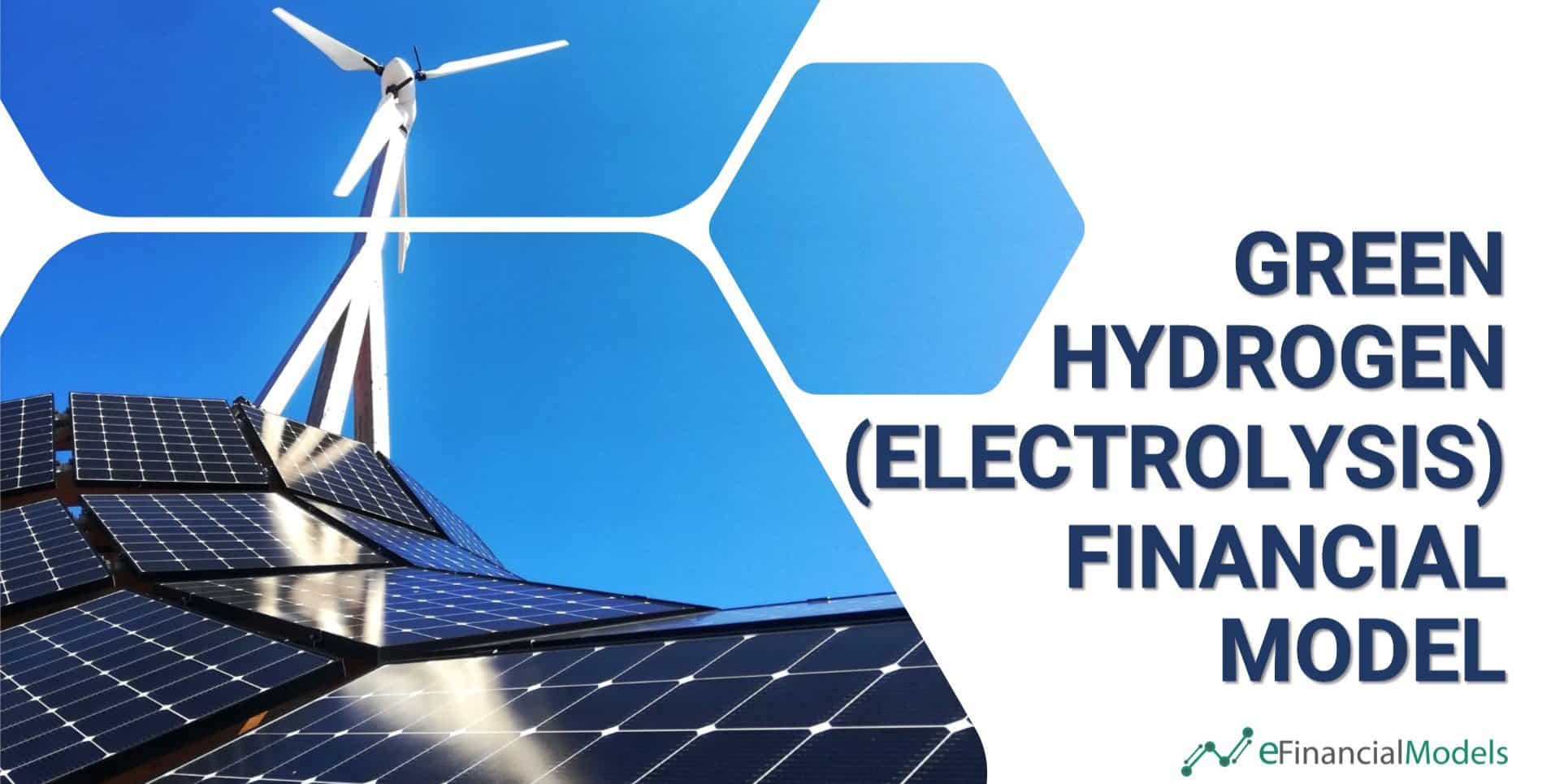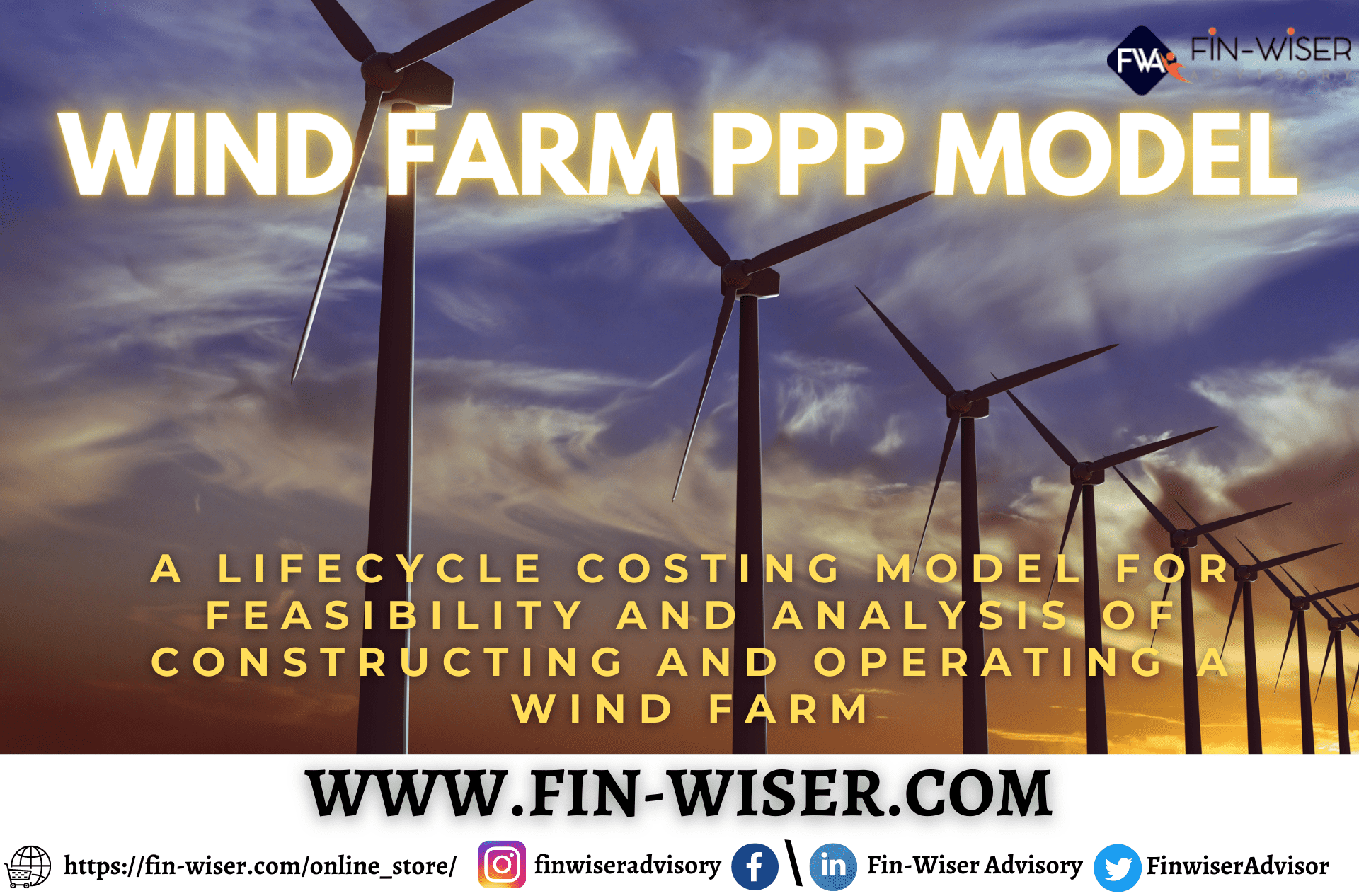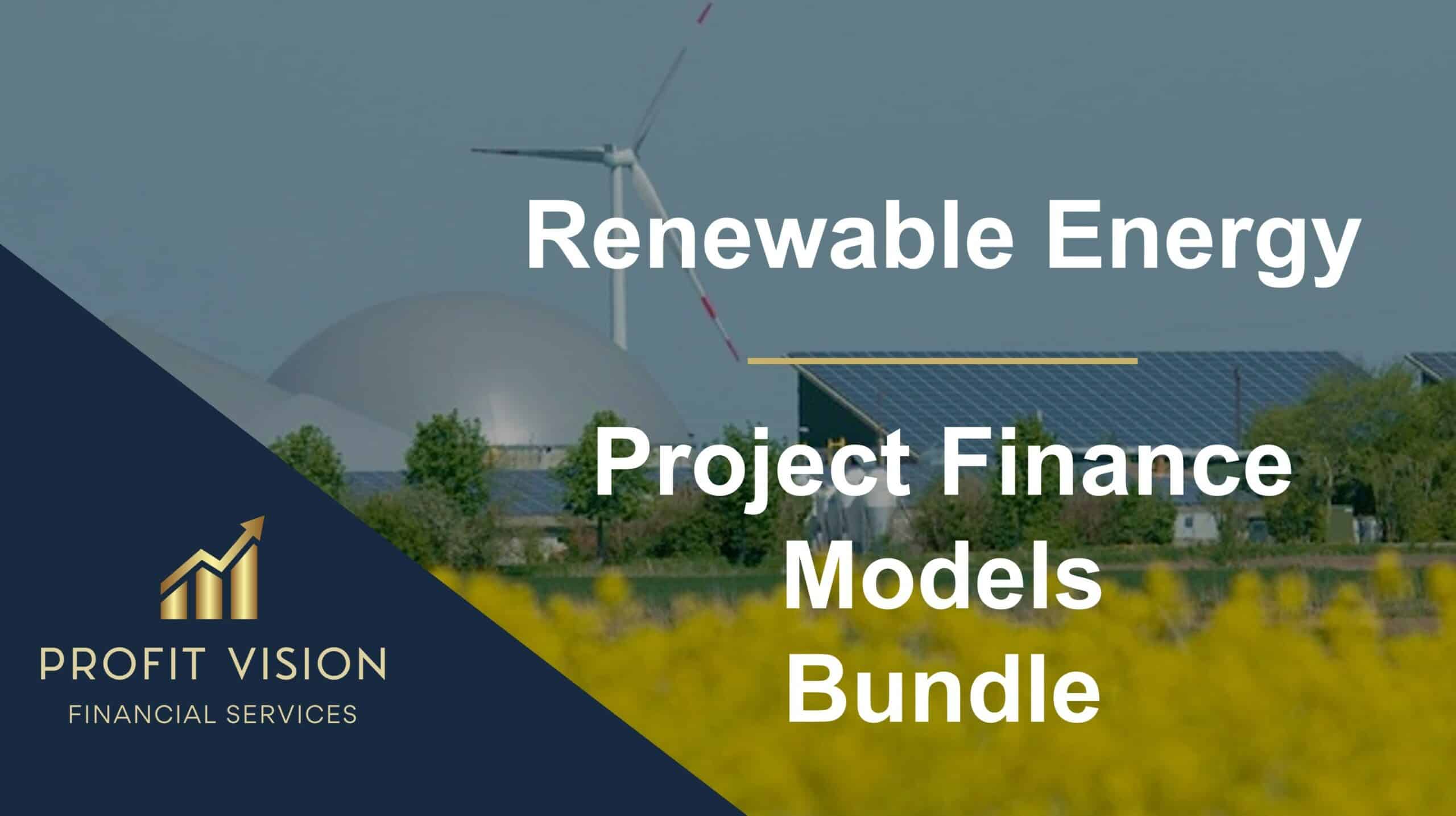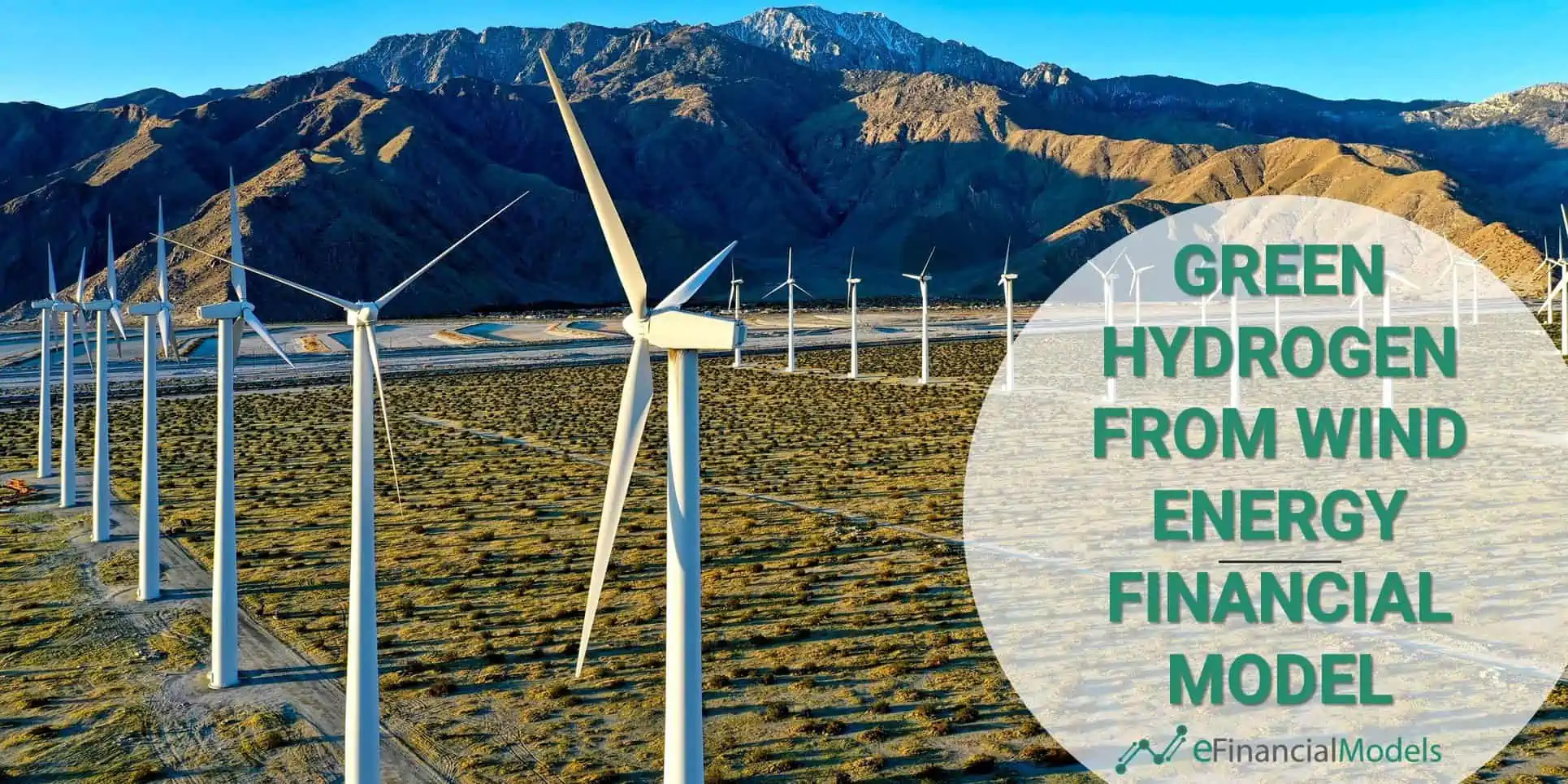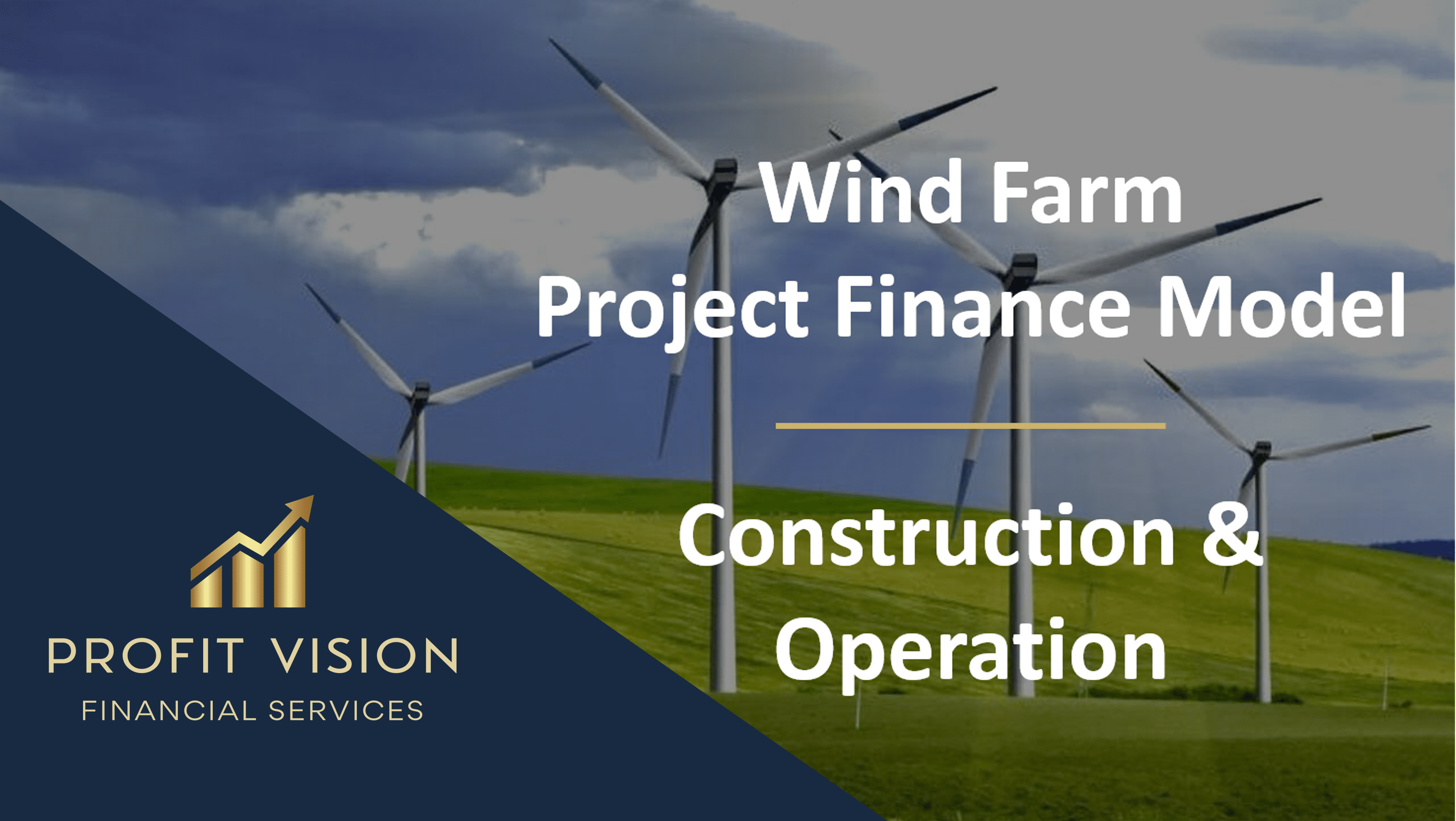Wind Farm Financial Model
Strategically design the financial framework for launching a wind farm, incorporating up to five distinct phases of deployment, each featuring varying numbers of turbines.

Video Overview:
I’m excited to enter the renewable energy space with this wind farm financial model. It is a timeless tool that will help anyone figure out the financial requirements and potential returns of a wind farm business. I’ve run it for up to a period of 10 years with easy assumptions for timing. Everything is driven off a month # input.
Key Outputs:
- Monthly / Annual Income Statement, Balance Sheet, Statement of Cash Flows
- Monthly / Annual Pro Forma Detail (shows more detailed line items rather than high level summary data)
- DCF Analysis, IRR, ROI, Equity Multiple, Annual Executive Summary
- Visualizations
The input structure is clean and simple. Just configure your deployment tranches based on the number of wind turbines deployed, the month #, the total cost of the turbines based on megawatt capacity, and the total land/development/construction costs. Each tranche also has its own financing assumptions, and those loans can be interest only accrual with a REFI at the end of the interest only period or simply regular p+i amortization loans.
Revenue is driven by two potential options. The user can define each deployment tranche as using a power purchase agreement or selling energy on the open market (wholesaling). The power purchase agreement is more stable where the wind farm will be paid a fixed amount of money per month with regular escalations and will have to maintain some level of productivity. The open market strategy is a bit more complicated and requires inputs for seasonality / capacity, the market price for megawatts, and the change in expected prices over time. There is also an annual production degradation factor to account for.
For direct costs, I’ve included a few different drivers. The user can account for monthly costs per turbine per month, a cost per megawatt transmitted, and then an entire cost schedule for the monthly cost per total tranche deployment. For the total costs per deployment per month, the user can enter monthly costs for things like:
- Repairs / Maintenance
- Environmental Compliance
- Spare Parts / Equipment
- Land Lease (if not purchasing land)
- Insurance
- Property Taxes
- Utility and Grid Connection Fees (fixed)
- Monitoring and Control Systems
There is an option to increase those costs on an annual basis as well.
For the capex section, which will drive depreciation, I’ve separated each of the five tranches into three categories for good cost segregation allocations. They include Turbines, Land, and Sitework.
There is also a section to account for joint ventures. The cap table has an input for equity investments by outside investors, their share of the company as well as cash contributed by owners/operators, and their share of the company. Each individual investment has a related cash flow stream and IRR. There is also a DCF Analysis that applies to the investor pool and owner pool.
You can run complex simulations with this model that accounts for various expected assumptions, pricing, capacity, and costs to see what environments are feasible and favorable for starting up your wind farms over time.
This template is included in two bundles:
Similar Products
Other customers were also interested in...
Renewable Energy Financial Model Template Bundle
Take this opportunity and get a discount by getting the Renewable Energy Bundle where you get Solar,... Read more
Green Ammonia from Renewable Energy Financial Mode...
This comprehensive 40-year tool aid investors in evaluating potential risks and returns and assess t... Read more
Wind Farm Development Model
Wind Farm Excel Model Template is an excellent tool to assess the financial feasibility a proposal t... Read more
Green Hydrogen (Electrolysis) Production Financial...
This green hydrogen financial model template builds a multi-year financial plan to analyze the finan... Read more
Wind Farm – 3 Statements Financial Model Tem...
Wind Farm - 3 Statements Financial Model with Flexible Timeline, NPV, IRR, Debt Covenants,... Read more
Renewable Energy Financial Models Bundle
A collection of user-friendly Project Finance Models in the Renewable Energy Sector offered at a dis... Read more
Green Hydrogen Production from Wind Energy Financi...
The Green Hydrogen from Wind Financial Model aims to comprehensively forecast a horizon of 40 years ... Read more
Wind Farm – Project Finance Model
Project Finance Model providing forecast and profitability analysis of a development and operating s... Read more
Start Up Wind Farm Excel Model and Valuation (HAWT...
Start Up Wind Farm Excel Model presents the business case of an investment in the construction of a ... Read more
Renewable Energy Financial Model
Comprehensive financial model designed for analyzing renewable energy projects, such as solar or win... Read more
You must log in to submit a review.






















